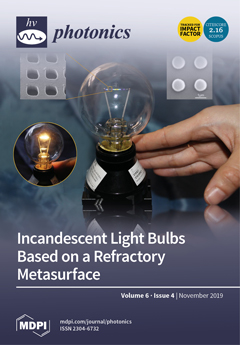The pseudophakic eye lacks the ability to produce a refractive change in response to object proximity. Thus, individual anatomical features such as the pupil size play an important role in achieving functional vision levels. In this work, the range of pupil sizes at
[...] Read more.
The pseudophakic eye lacks the ability to produce a refractive change in response to object proximity. Thus, individual anatomical features such as the pupil size play an important role in achieving functional vision levels. In this work, the range of pupil sizes at varying object distance was measured in pseudophakic participants. Furthermore, the impact of the measured values on eye optical quality was investigated using a computer simulation model. A binocular eye-tracker was used to measure the participants’ pupil sizes at six object distances, ranging from
m (i.e., vergence of
D) to
m (i.e., vergence of
D), while observing a Maltese cross with a constant angular size of
. In total, 58 pseudophakic participants were enrolled in this study (age mean ± standard deviation:
years). The effects of object distance and age on pupil size variation were investigated using linear mixed effects regression models. Age was found to have a small contribution to individual variability. The mean infinite distance pupil size (intercept) was
(
CI: 2.74, 6.17) mm and the mean proximal miosis (slope) was
(
CI: −0.53, 0.08) mm/D. The visual acuity (VA) estimation for a distant object ranged from
logMAR (smallest pupil) to
logMAR (largest pupil) and the near VA (
m) when mean proximal miosis was considered ranged from
logMAR (smallest pupil) to
logMAR (largest pupil). When mean distance pupil was considered, proximal miosis individual variability produced a variation of
logMAR for the near object and negligible variation for the distant object. These results support the importance of distance pupil size measurement for the prediction of visual performance in pseudophakia, while suggesting that proximal miosis has a negligible impact in VA variability.
Full article





